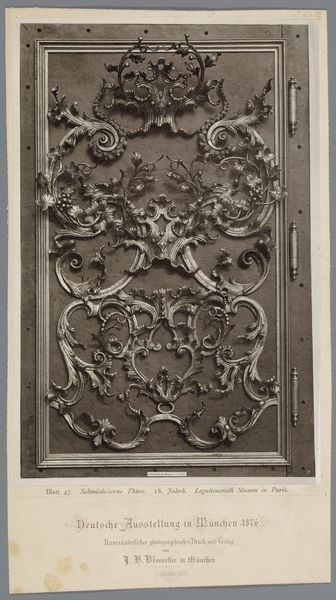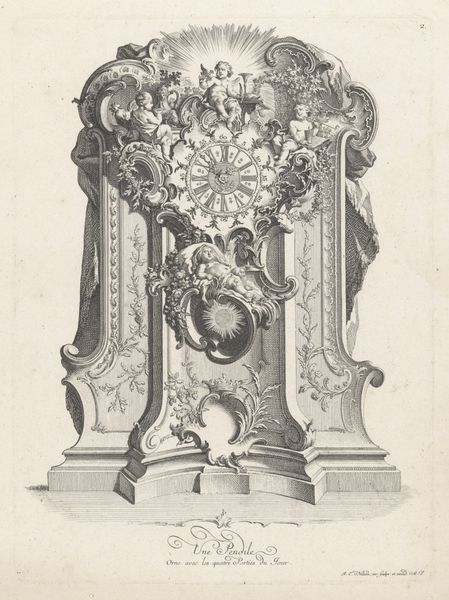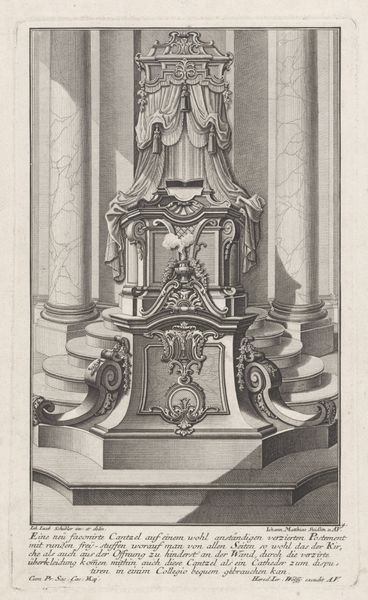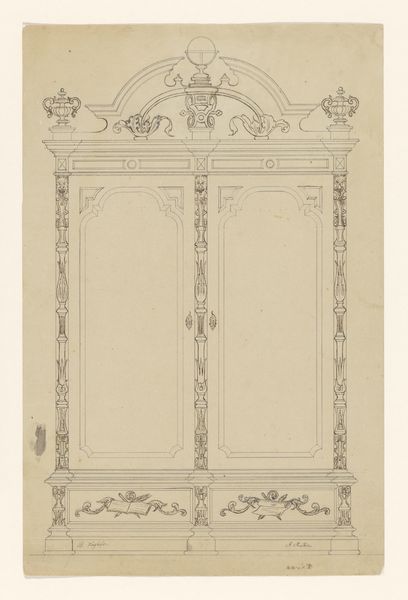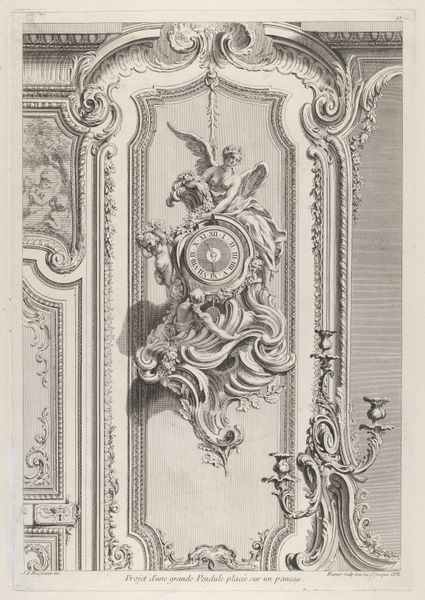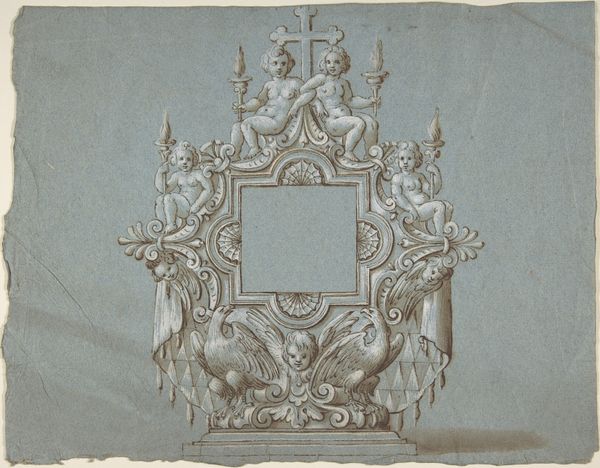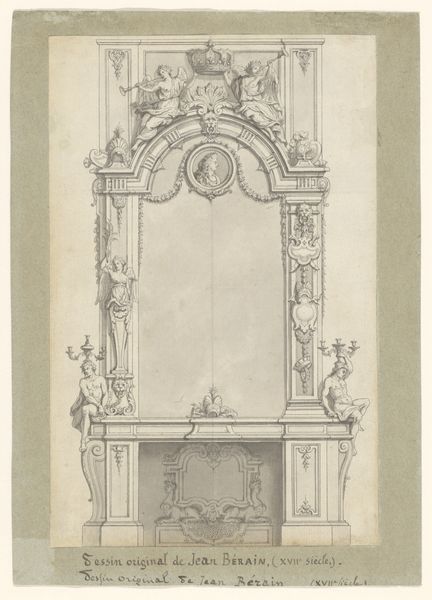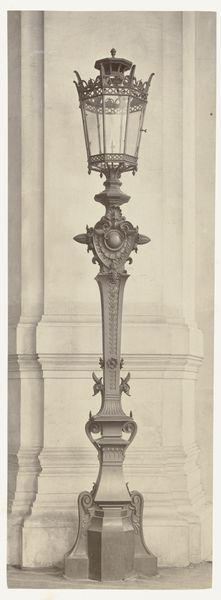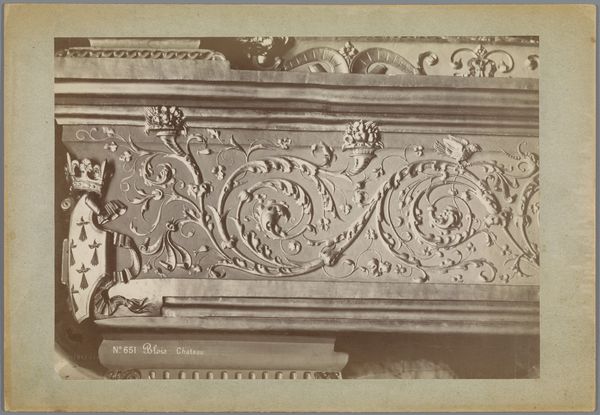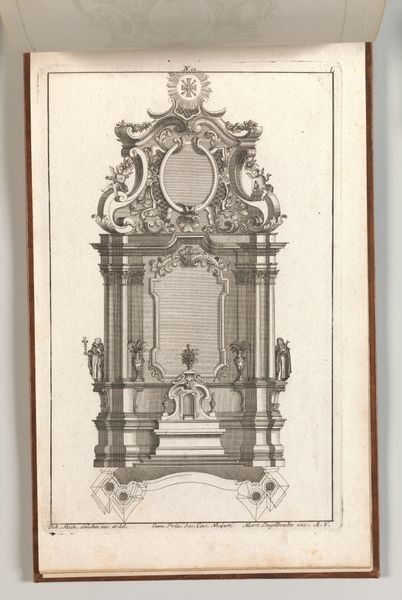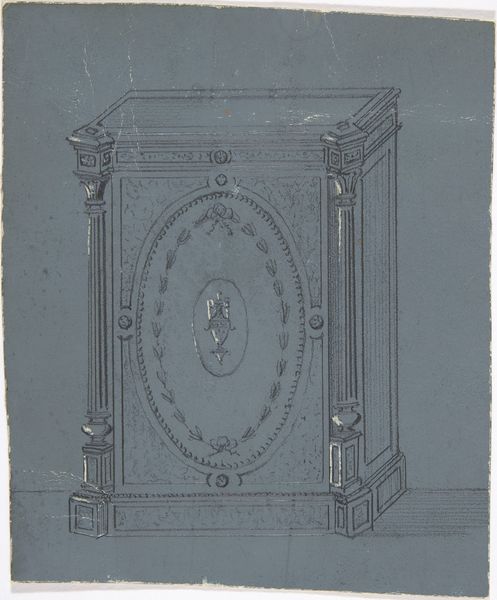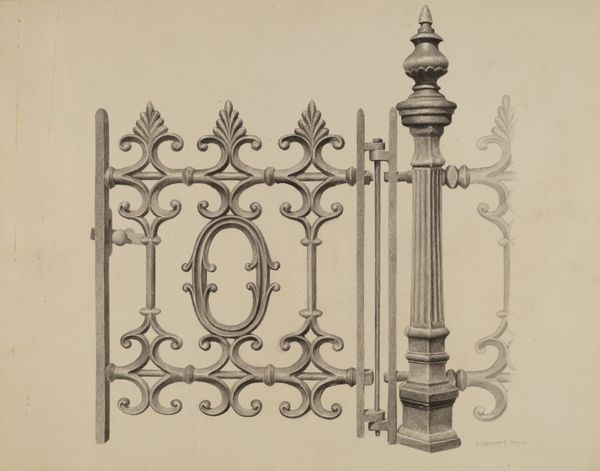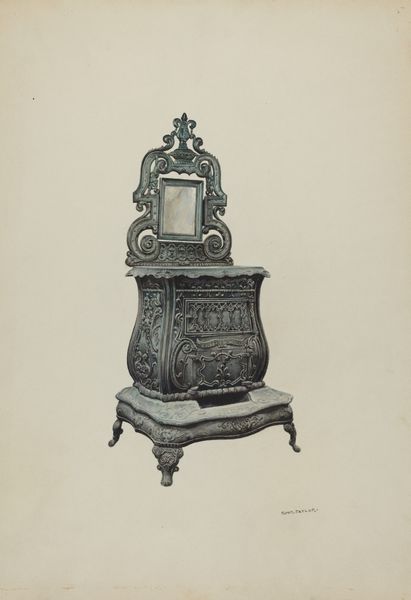
Bokaal in reliëf met hondenkoppen aan de oren,de bokaal is omringd door bladeren. c. 1878 - 1881
Dimensions: height 375 mm, width 279 mm, height 620 mm, width 438 mm
Copyright: Rijks Museum: Open Domain
Editor: This photograph by Louis-Emile Durandelle, taken sometime between 1878 and 1881, showcases a relief sculpture – a sort of trophy with dogs and foliage. It gives the impression of a historical document, and the texture seems fascinating. What do you make of this piece? Curator: For me, it is a perfect illustration of how Neoclassicism embraced industrial production. Durandelle documented architectural details of the Parisian Opera, right? Think about the material implications. Plaster reliefs, like this, provided decorative elements that were once painstakingly carved in stone by artisans. Here, we see skilled labor, yet mass produced ornamentation democratizing architectural embellishment for a rapidly growing bourgeoisie. Editor: So, you’re suggesting this relief, through its production methods, changed who had access to ornate designs? Curator: Precisely! The means of production—molding rather than carving— dramatically lowered the cost, altering the relationship between the patron, the artist and, indeed, the end consumer who lived within such decorated spaces. Note also that photography becomes the method for reproducing it and allowing further dissemination, even commodification. Editor: It’s interesting to consider this artwork not just as an object, but as part of an economic shift in design. Does the material influence how we see its artistic merit? Curator: Absolutely. Previously, hand-carved sculptures signaled status. Here, photography, as a reproducible medium, documents a process in flux. The “original” artwork loses its aura, challenging conventional art historical boundaries and aesthetic value judgements. It compels us to consider the complex interactions between artistic vision, industrial capability, and socioeconomic accessibility. Editor: That’s given me a whole new way of looking at photographs of sculptures and thinking about the processes behind their creation! Thank you for sharing your insights.
Comments
No comments
Be the first to comment and join the conversation on the ultimate creative platform.
